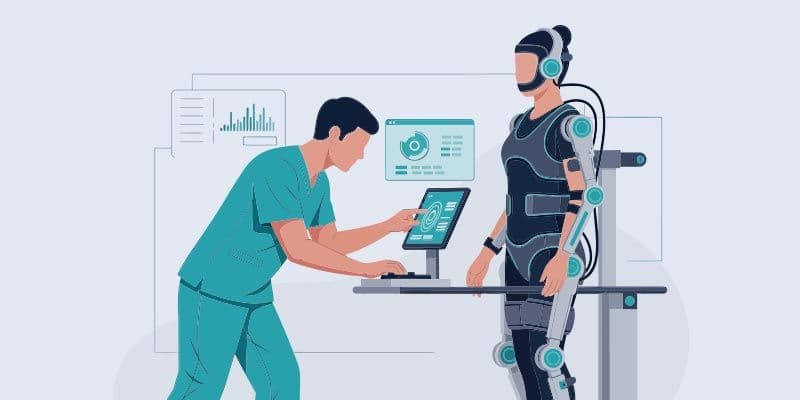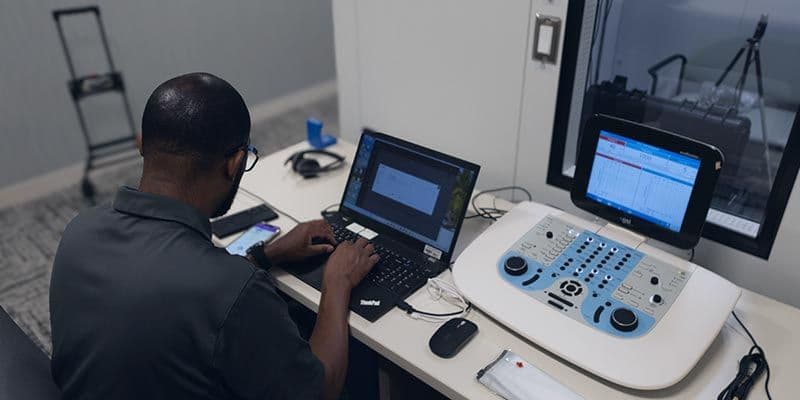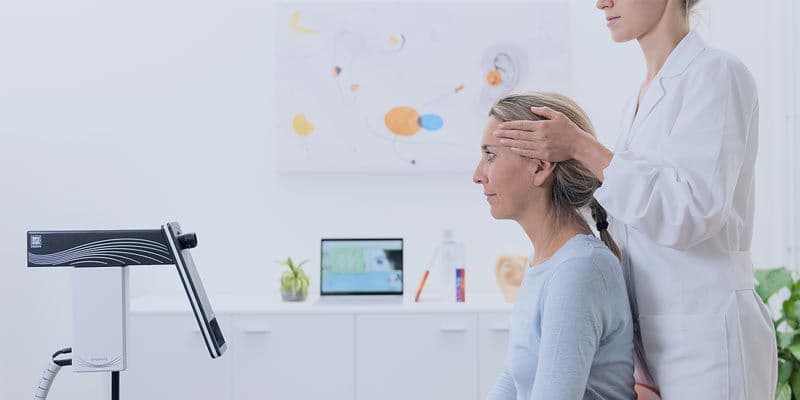Starting a Balance Clinic: Your Questions Answered
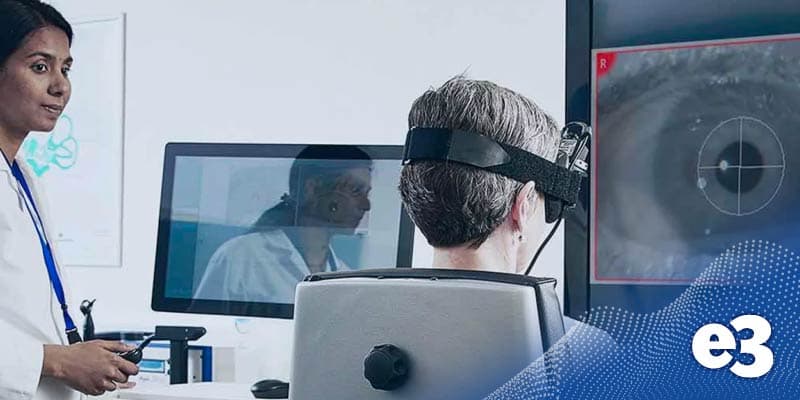
If you are an audiologist considering launching a cost-effective balance clinic or aiming to provide extensive neurodiagnostic evaluations, this article is for you. With insights from balance expert Joseph Sakumura AuD, we will answer the most frequently asked questions about integrating vestibular services into your practice.
Why should I add a vestibular clinic to my practice?
In the ever-evolving landscape of hearing care, the need for audiologists to diversify their services is crucial.
The top reasons to offer vestibular rehabilitation and assessment services are:
- Provide a vital medical service to tackle a concern that a staggering 90 million Americans seek help for annually.
- By addressing both hearing loss and balance problems, you can establish yourself as a comprehensive healthcare provider. This not only helps secure your position in the competitive audiology field but also ensures a consistent flow of patients seeking your expertise.
- Enhance patients’ experience by providing more holistic care. It is well-documented that patients dealing with hearing loss often also experience vestibular disorders, and vice versa. By taking a comprehensive approach, you can optimize patient outcomes and build a stronger patient-provider relationship. This leads to increased patient satisfaction and loyalty.
- Added revenue stream for your clinic.
What balance equipment do I need to start?
Many avoid balance services due to the misconception that extensive space and expensive equipment are necessary. This is untrue. Clinics can start with minimal space and basic tools, like a clinician’s skills for postural stability and eye movement analysis. While specialized clinics offer comprehensive neurodiagnostic evaluations, not all services require equipment.
A comprehensive neurodiagnostic evaluation found at specialty balance clinics (e.g., Mayo Clinic) might include postural stability (CDP), videonystagmography (VNG), caloric testing, rotary chair testing, evoked potential studies (VEMP testing, ECochG, BAER, etc.), and more. However, that does not mean offering these services requires all these capabilities.
It is important to mention that advanced equipment enhances diagnostic value and revenue opportunities. A gradual approach works well, starting with VNG, caloric testing, and evoked potentials. As the clinic grows, consider adding a rotary chair and computerized posturography.
When considering the purchase of balance equipment, it is advisable to start by choosing a few key pieces. One crucial technique in clinically assessing dizziness and balance disorders involves observing eye movements. Simple tests using video goggles can be performed to measure nystagmus, as seen in cases of BPPV (e.g., VisualEyes™ 505), or to check for low VOR gains, as seen in vestibular neuritis (e.g., EyeSeeCam vHIT).
These instruments serve the purpose of screening for a wide range of disorders and offer a quicker and more convenient means of determining whether VNG or rotary chair testing is necessary. Otolith function plays a crucial role in detecting gravity and linear accelerations. The capability to accurately record torsional eye movements enables clinicians to utilize the ocular counter roll (OCR) test, as exemplified by VisualEyes™ 525, to evaluate the otoliths and their central connections.
Which patients with vestibular balance disorders can I assess and treat?
The simple answer is anyone who has complaints of dizziness, vertigo, or imbalance. Dizziness is the most common complaint of older adults to their physician. It is the third most common complaint of all individuals across the life span only preceded by back pain and headache. Babies, adolescents, adults, and older adults all suffer from conditions which may cause dizziness.
The word dizziness is generic. It describes vertigo, imbalance, light-headedness, or other complaint profiles. Thus, effective diagnosis of the problem’s origin is a critical component of the patient’s journey to wellness. For example, a patient with uncontrolled blood pressure causing light-headedness will not need the same treatment as someone with a vestibular problem.
Audiologists can be one of the first providers to see these patients. Through a comprehensive evaluation and test protocol, they guide patients on the next best step in their medical triage. Finally, treatment of certain standard conditions (e.g., BPPV) is well within audiologists’ scope and can be completed in an office with a small treatment table.
What space requirements do I need to offer vestibular services?
The space required to complete all neurodiagnostic vestibular tests including advanced protocols such as rotary chair is approximately 100 square feet (about the area of an apartment bedroom). The room should not have excessive windowing but thanks to advances in eye-tracking technology, the room is not required to be completely dark either. Most exam rooms at physician or audiology practices are ideally suited to perform this testing.
What vestibular training do I need?
Much like any sub-specialization area of audiology, some additional education may be required to develop the clinical skillsets needed to add these vestibular services. While vestibular testing and treatment are within the scope of practice for all audiologists, it is recommended that specialty training be completed to ensure competency.
Many universities and doctoral programs have education and training in this area, and ample CEU opportunities and certifications are available commercially. Textbook chapters, research articles, case studies, and free online resources, such as the Interacoustics Academy, are also great places to start.
How do I market my balance clinic and acquire patients?
Adding balance assessments and vestibular rehabilitation establishes your practice as a medical entity. While many audiology practices may be categorized by patients or referring physicians as more retail-focused, neurodiagnostic vestibular testing helps “medicalize” audiology. Therefore, patient acquisition efforts should focus more on medical referrals than direct-to-consumer.
A physician who believes in what you do may send you thousands of patients over their career. Because so many medical conditions can cause dizziness, all physician specialists can be good referral sources, not just ENT or neurology!
To gain the trust of referring physicians, marketing efforts to them must bring value, educate, and instill confidence that you will take good care of their patients. Effective modalities include:
- Research articles which demonstrate the need for vestibular services.
- Educational brochures highlighting common conditions which you can help diagnose and treat.
- Materials demonstrating the clinical utility and efficacy of what you do.
It may also be of value to make in-person visits to speak with physicians about their current referral patterns and how you can help them be more efficient and take better care of patients. The most crucial aspect of gaining referrals and the medical community’s trust is taking good care of patients when they refer to you.
Additionally, studies have shown that calling referring physicians to report findings increases referral rates by 2.5 times in comparison to only sending a report. So, pick up the phone and call your referring physician!
For audiology or ENT practices already offering hearing or other services, the best source of patient acquisition will be your existing patients. Many patients with hearing loss will also have balance problems and vice versa.
It surprises many audiology practices to learn how many patients coming into and out of their practice daily have imbalance or dizziness. By simply asking patients in both written and verbal formats if they’ve experienced dizziness, vertigo, or imbalance recently you can generate a significant flow of patient volume for the vestibular testing service.
Other mediums of direct-to-patient marketing can be utilized (e.g., mailers, social media, postcards, radio, etc.) and should be oriented towards raising awareness of these symptoms and that there is a solution to the problem that can be found in your practice. You must educate the community that dizziness is not normal, and they do not need to learn to live with it.
What is the most effective way to schedule vestibular appointments?
Most audiologists are familiar with the standard operating procedure of a hearing evaluation. Much like the structure of a visit for a patient with hearing loss, the appointment structure for a vestibular assessment typically consists of:
Intake or case history: This should include pre-appointment paperwork, Clinimetrics (e.g., Dizziness Handicap Inventory), medical history and questioning.
Assessment: Protocols depend on equipment and instrumentation availability at a given clinic.
Counseling and delivery of the plan of care: Once all information is gathered from subjective and objective evaluations, the audiologists will develop impressions, recommendations, and next steps to treatment.
Reporting and delivery of results to the referring physician: After the visit, the clinician will need to generate a report for the patient and share this information with them.
The visit structure remains consistent but varies in step duration. Determining appointment length for dizzy patients depends on available tests and revenue considerations. For example, clinics with limited tests like VNG have shorter appointments than those with more tests like rotational and evoked potentials, resulting in increased revenue, discussed below.
For profitability, aim for approximately $275 per hour. A full neurodiagnostic vestibular evaluation takes around 2 hours, with shorter times for abbreviated protocols.
What about billing for vestibular services?
Below is a list of the CPT codes used for neurodiagnostic vestibular testing. Each test requires different instrumentation, and this table is designed to provide a basis for understanding the reimbursement.
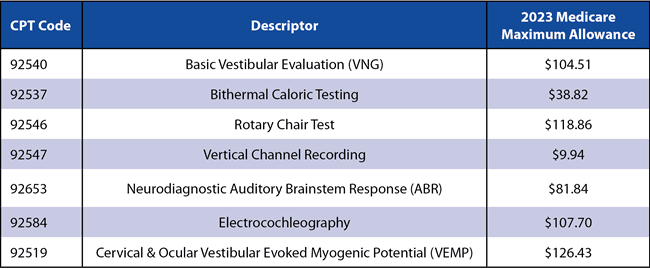
*This table is for the purpose of this article only and is not intended to be used for billing. Please refer to the ASHA Medicare Fee Schedule for Audiologist for exact codes and fees.
Not all patients need every test, and some tests (e.g., CDP) are not listed, but this table offers a billing and coding overview. Medicare sets allowable rates, which commercial payers follow.
Major insurers cover the codes in this table; visit www.cms.gov for more. These tests should take no more than 2 hours. Efficient protocols in neurodiagnostic vestibular services can yield significant revenue and make it a highly profitable service for practices.
In conclusion, establishing a vestibular clinic offers diverse opportunities, catering to your specific goals and resources. By incorporating balance assessments and treatments into your audiology practice, you can adapt to the evolving healthcare landscape and provide much-needed services. This integration meets industry demands and enhances patient experiences, fostering stronger relationships and optimal outcomes.
Moreover, adding balance assessments can expand your patient base, solidify your position in the competitive audiology field, and ensure a steady flow of individuals seeking specialized care. This comprehensive guide delves into key success domains, equipping you to navigate the complexities of your balance clinic’s establishment and optimization.
Your journey starts here, benefiting both your practice and patient well-being.
Thank you to Dr. Joseph Sakumura, AuD, for contributing expert insights for this article.
Dr. Sakumura, AuD, specialized in balance disorders during his clinical residency at The American Institute of Balance (AIB). As the former Director of Centers of Specialty Care and Chief Science Officer at AIB, Joe worked closely with ENT and audiology practices to develop their dizziness and balance service lines and protocols. Currently Joe serves as the Regional Sales Manager for e3 diagnostics, empowering audiologists with top-notch instrumentation to enhance patient care across the Midwest.
Are you considering adding vestibular services and need our expertise? Reach out to your local office today.
Contact Local Office
Need balance equipment? e3 Diagnostics offers top-notch vestibular balance test solutions from leading manufacturers like Micromedical by Interacoustics and Virtualis. With same-day service in many locations, e3 Diagnostics stands ready to provide high-quality balance assessment equipment for your ENT practice, audiology clinic or rehab facility.
Learn More


